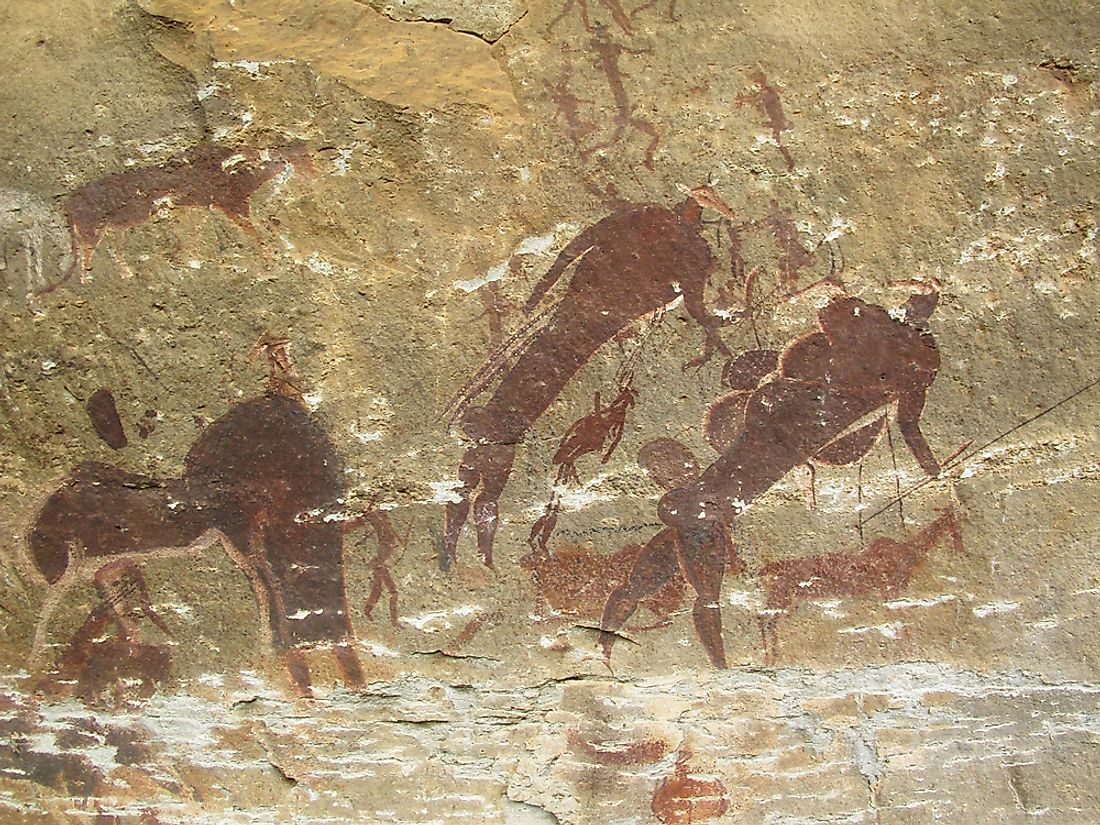Who are the Khoisan People?

The term “Khoisan” is used to describe two groups of people found in Southern Africa; the San, and the Khoi or Khoikhoi. Both groups share linguistic and physical characteristics distinct from the Bantus who are the majority in the region. The San are popularly known as the Bushmen and they are known to forage. The Khoikhoi are pastoralists. The San are the indigenous people of Southern Africa before the arrival of Bantus from North and East Africa 700 years ago, displacing the indigenous population. Researcher’s and historians cannot conclusively determine whether the Khoi and the Sans have different origins. About 22,000 years ago the Khoisan was the most populous group of people on Earth; they are estimated to number about 100,000 today. They occupy the arid regions of the Kalahari Desert. The largest of the Khoisan lineages are closely linked to the Nilotic people of Kenya than to the Bantus of Southern Africa.
History
Present day Khoisan resembles the ancient Sangoan skeletal remains. The Sangoan occupied parts of southern Africa during the late stone age and are the ancestors of the Khoisan. The Sangoan were hunters, a trait passed to the Khoisan. It was not until a few hundred years ago that they began domesticating sheep and cattle after adopting the cultures from the Bantus who migrated from East Africa. The Khoisan language groups are different in structure and vocabulary although the groups are closely related, unlike the Bantu languages such as the Xhosa and Zulu which are similar to one another. After migrating to southern Africa, the Xhosa and Zulu adopted the click consonants unique to the Khoisan and loaned some words.
Biology and Genetic Characteristics
In his book “The Descent of Man” (1882), Charles Darwin describes the Khoisan posterior as sexually selective. The group exhibits steatopygia. In 1991 it was researchers determined that the Y chromosome of the San men was different from other populations. The Y chromosome is conserved during genetic changes, and a similar chromosome might be passed from through several generations. Research later revealed that the Y chromosome carried by the Khoisan was one of the oldest ever found in modern man suggesting that they might be the oldest humans walking the planet. Studies on their Mitochondria also reveal that they carry the earliest forms of haplogroup of any Mitochondria.
Culture
The San art remains important in their identity and representation. The art has kept them politically recognized. There is a lot of stereotypes concerning the Khoisan art because it is considered “primitive art” by western art collectors. The Ju|’hoan jewelry weaved by the Khoisan creates expressions by the way it is won rather than the pattern of the design. The Nama-Khoisan dance, referred known as the “Nama Stap Dance,” is performed with artistic/symbolic signs and has been passed down from one generation to the other. The level of interaction, style, and patterns exhibited by the dancers symbolize the relationship between the various groups and individuals. They have incredible knowledge of their environment. A teenage Khoisan boy can determine which plant is safe to eat and which is not, they can also tell which herbs are used to treat what disease in humans and animals.











